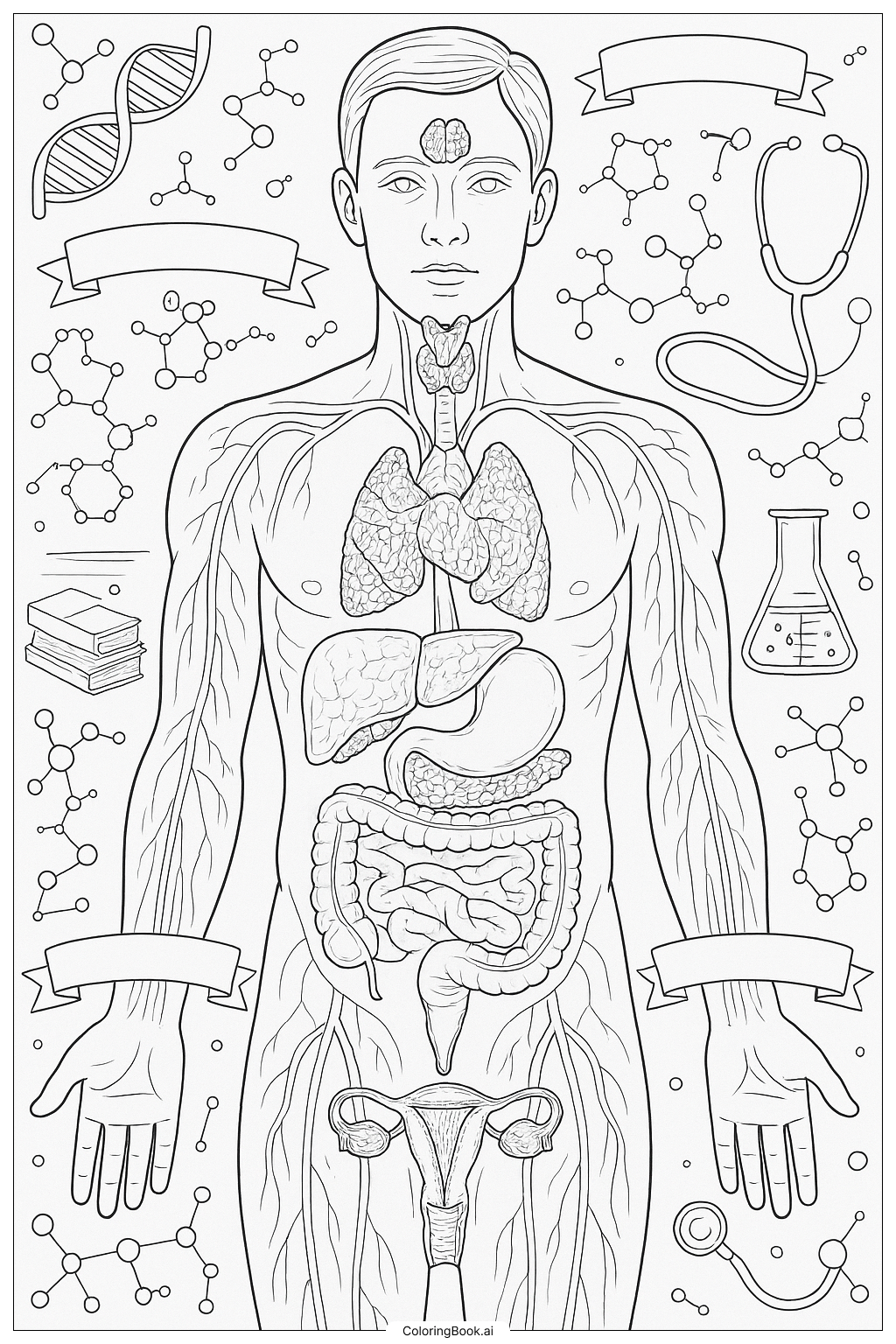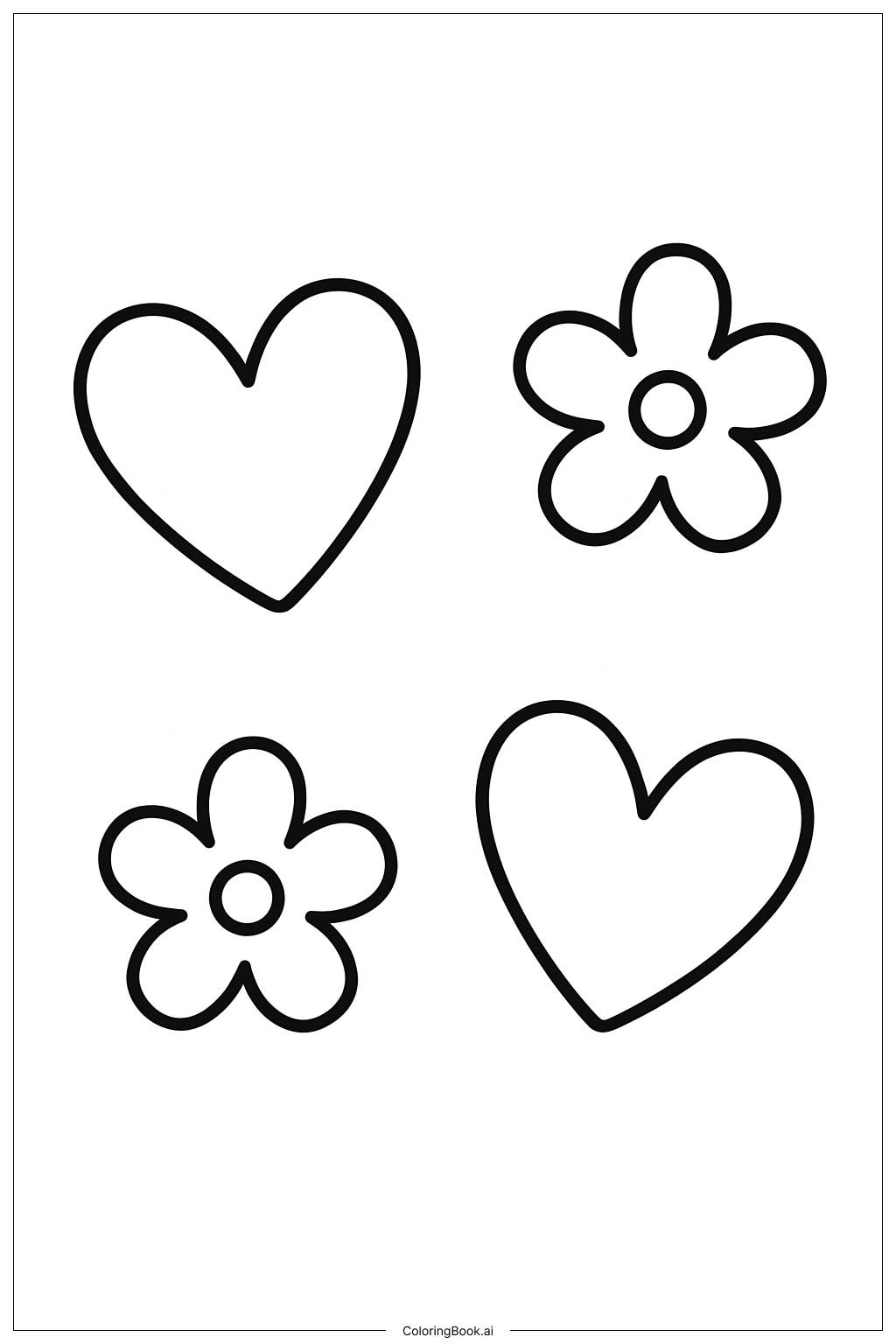Coloring tips: How to color The Complete Endocrine System Anatomy coloring page well?
Use different bright colors for each gland and organ to make them stand out. For example, color the brain gland purple, the thyroid green, the liver brown, and the stomach pink. Use light colors for the background molecules and objects to keep the focus on the body. You can also use shading or patterns to show texture, like soft colors for organs inside. Feel free to add your favorite colors to the stethoscope and books to make the picture lively and fun.
Coloring challenges: Which parts are difficult to color and need attention for The Complete Endocrine System Anatomy coloring page?
1. Small and detailed gland areas like the pituitary gland on the brain need careful coloring to stay inside the lines. 2. The molecular structures around the border have many small circles and lines that require focus. 3. The shading on organs such as the liver and pancreas shows texture but can be tricky to color smoothly. 4. The veins and arteries in the arms have thin lines that can be hard for younger kids to color precisely. 5. Keeping the coloring neat while differentiating similar shapes like intestines might be challenging for beginners.
Benefits of coloring books: Advantages of drawing The Complete Endocrine System Anatomy coloring page
Coloring this image helps children learn about the human endocrine system in a fun way. It improves focus and attention to detail when coloring small parts. It also encourages creativity by choosing colors to represent different organs. Learning about body parts and science helps build curiosity and knowledge. This activity can boost fine motor skills and hand-eye coordination, useful for young learners.




